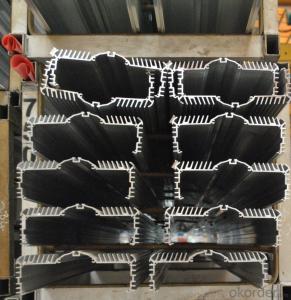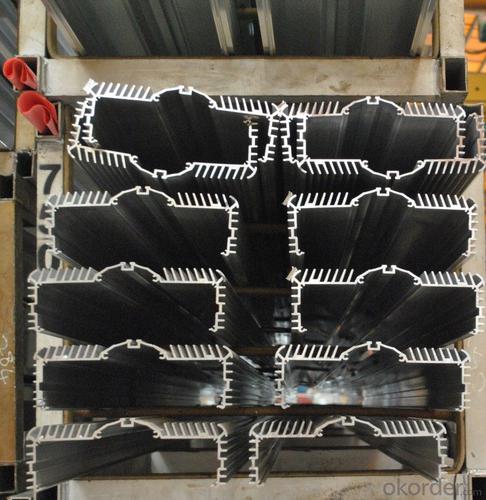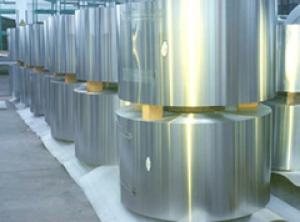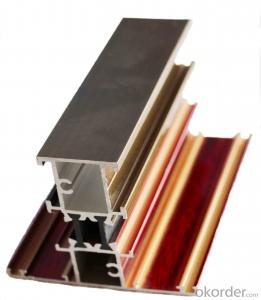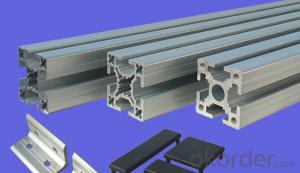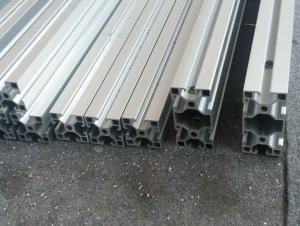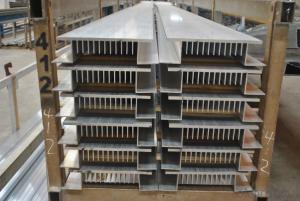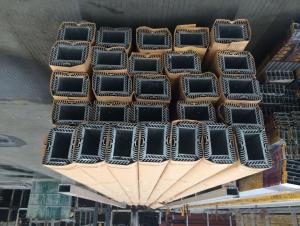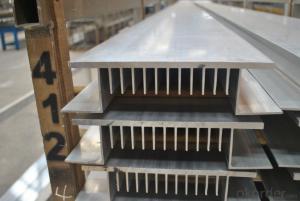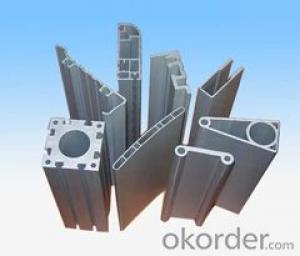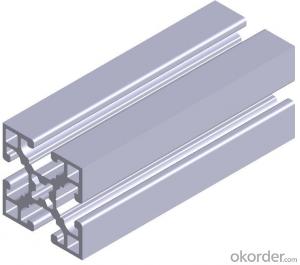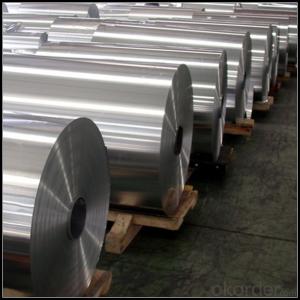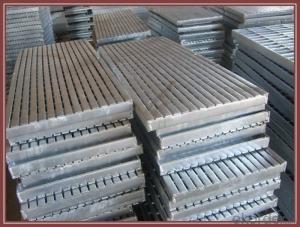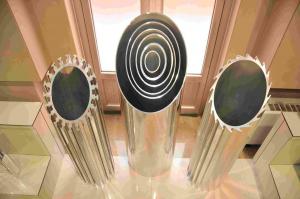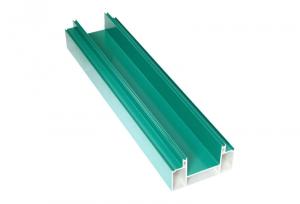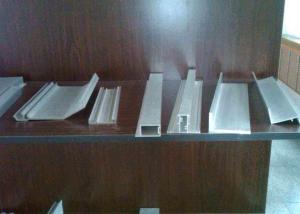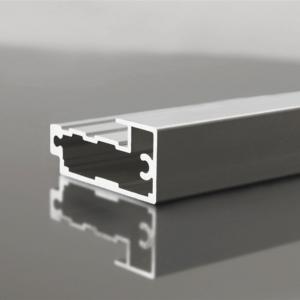Aluminum Cladding Profiles for Heat Radiator
- Loading Port:
- Shanghai
- Payment Terms:
- TT OR LC
- Min Order Qty:
- 5 m.t.
- Supply Capability:
- 1000 m.t./month
OKorder Service Pledge
OKorder Financial Service
You Might Also Like
Specifications
Aluminum profile.heat sink profile
1.Short lead time: 7-15days.
2.professional technology supports.
3.Factory direct price
aluminum profile,industrial aluminum extrusion, construction aluminum profile
Feature:
Specification: according to your aluminum profile drawing or sample
Alloy Code: 6063-T5.6061-T6 o
Surface treatment:
Mill finish
electrophresis
Anodized(silver anodizing,bronze anodizing,champagne anodizing,etc.),
powder coating (need your confirmation by the panton colour, such as RAL9001 )
Length: no more 6.0 M
Sample time: about 13 days o
Lead time:
about 20 days for 1x40' feet
package:
Shrink film and wrapper, kraft paper ,plastic film or per client's requirement.
price: A00(SMM)+Processing fee
payment :
30% deposit +70% before the delivery or against the copy of B/L
delivery : 15-25 days after the deposit confirmed
- Q: What are the methods to reduce waste from aluminum profiles in construction?
- <p>To minimize waste generated from using aluminum profiles in building construction, consider the following strategies: 1) Accurate planning and design to reduce offcuts. 2) Utilize modular designs to maximize material usage. 3) Implement recycling programs to repurpose leftover profiles. 4) Opt for suppliers that provide aluminum profiles cut to exact specifications. 5) Educate workers on proper handling and waste reduction techniques. 6) Use digital tools for precise cutting to minimize material waste. 7) Encourage the use of aluminum due to its high recyclability and low energy consumption in the recycling process.</p>
- Q: What are the noise reduction properties of aluminum profiles?
- Aluminum profiles have good noise reduction properties due to their ability to absorb and dampen sound vibrations. The high density and stiffness of aluminum help to minimize noise transmission, making it an effective material for reducing unwanted noise in various applications.
- Q: Can aluminum profiles be used in exhibition or trade show displays?
- Exhibition or trade show displays can incorporate aluminum profiles, which are lightweight, durable, and versatile. These profiles are an excellent option for constructing exhibition displays due to their ability to be easily assembled and disassembled, enabling swift setup and dismantling at trade shows. Furthermore, aluminum profiles can be tailored to produce diverse shapes and sizes to accommodate various exhibition booth designs. They can also be effortlessly combined with other materials like fabric, glass, or acrylic panels to create visually appealing and professional displays. Ultimately, aluminum profiles present a practical and cost-effective solution for exhibition or trade show displays.
- Q: Can aluminum profiles be used in construction?
- Yes, aluminum profiles can be used in construction. Aluminum is a lightweight yet strong material that is resistant to corrosion, making it suitable for various construction applications. It is commonly used in the construction industry for building facades, windows, doors, roofing systems, and structural components. Additionally, aluminum profiles offer flexibility in design, easy installation, and low maintenance requirements, making them a popular choice in construction projects.
- Q: What are the different sealing options for aluminum profiles?
- There are several sealing options available for aluminum profiles, including anodizing, powder coating, liquid paint coating, and mechanical sealing. Anodizing is a popular choice, providing a durable and corrosion-resistant finish by creating a protective oxide layer on the surface of the aluminum. Powder coating involves applying a dry powder to the profile, which is then cured under heat to form a hard, smooth coating. Liquid paint coating can also be used, offering various colors and finishes, but may require more maintenance. Mechanical sealing involves using gaskets, tapes, or other sealing materials to create a tight seal between aluminum profiles. The choice of sealing option depends on the specific requirements of the application, such as desired aesthetics, durability, and environmental factors.
- Q: Can aluminum profiles be used in the construction of green buildings?
- Absolutely, aluminum profiles are certainly suitable for use in the construction of environmentally friendly buildings. Aluminum is a remarkably sustainable material that brings about a plethora of benefits for green building initiatives. To begin with, aluminum is a lightweight substance that facilitates easier transportation and handling during construction. Consequently, this reduces energy consumption and carbon emissions involved in transportation. Moreover, aluminum is highly recyclable. It can be melted down and reused without any compromise in quality, making it an ideal selection for sustainable construction. This recyclability also diminishes the need for extracting and processing new aluminum, consequently reducing the environmental impact. Additionally, aluminum boasts exceptional durability and resistance to corrosion, which means it can endure for an extended period without frequent maintenance or replacement. This, in turn, reduces the requirement for new materials and minimizes waste throughout the building's lifespan. Furthermore, aluminum profiles can be designed to enhance energy efficiency in green buildings. They can be utilized for windows, doors, and curtain walls, providing exceptional thermal insulation and minimizing heat loss or gain. This, in turn, diminishes the energy consumption necessary for heating or cooling the building, resulting in lower carbon emissions. Furthermore, aluminum is a non-toxic material that does not release harmful chemicals into the environment, ensuring a healthier indoor environment for occupants. In conclusion, aluminum profiles offer a multitude of advantages for green building construction. Their lightweight nature, recyclability, durability, energy efficiency, and non-toxicity make them an optimal sustainable choice for green building projects.
- Q: This question asks for a description of the various dimensions and forms of aluminum profiles that are utilized in siding systems.
- <p>Aluminum profiles for siding systems come in a variety of sizes and shapes to accommodate different architectural styles and structural requirements. Common profiles include flat bars, channels, angles, and Z-profiles. Sizes can range from narrow trims of 10mm to wide panels of over 200mm in width, with thicknesses typically from 0.5mm to 3mm. Shapes are designed for specific functions, such as interlocking for a seamless appearance, or with grooves for attaching insulation. Custom profiles are also available for unique applications. These profiles are chosen based on the building's design, load-bearing needs, and aesthetic preferences.</p>
- Q: Can aluminum profiles be used for exhibition stands?
- Indeed, exhibition stands can utilize aluminum profiles. Lightweight and adaptable, aluminum profiles prove to be a prime selection for exhibition stands. Their effortless assembly and disassembly facilitate convenient transportation and storage. Furthermore, aluminum profiles can be tailored to suit the particular design and layout prerequisites of an exhibition stand. They can be employed in fabricating frames, partitions, and display panels, resulting in a robust and polished structure. Incorporating aluminum profiles into exhibition stands also permits the flexibility to incorporate accessories such as lighting fixtures, shelving, and signage, thereby augmenting the overall visual allure and functionality of the stand.
- Q: The user is asking if it's possible to use recycled aluminum to create new aluminum profiles.
- <p>Yes, recycled aluminum can be used to produce new aluminum profiles. The process of recycling aluminum is energy-efficient and environmentally friendly, as it requires significantly less energy compared to producing aluminum from raw materials. Recycled aluminum maintains the same properties as new aluminum, making it suitable for manufacturing various aluminum profiles. The recycling process typically involves melting the aluminum, which can then be cast into new shapes and forms, including profiles for construction, automotive, and other industries. This not only conserves resources but also reduces waste and carbon emissions.</p>
- Q: This question asks about the typical applications of aluminum profiles within the field of architectural design.
- <p>Aluminum profiles are commonly used in building design for various structural and aesthetic purposes. They are utilized in curtain walls, window frames, and door systems for their strength and lightweight properties. Additionally, aluminum profiles are employed in the construction of balconies, handrails, and sunshades due to their durability and resistance to corrosion. They are also used in interior design for creating partition walls, ceiling systems, and decorative elements. The versatility of aluminum profiles allows them to be easily adapted to different architectural styles and requirements, making them a popular choice in modern construction.</p>
Send your message to us
Aluminum Cladding Profiles for Heat Radiator
- Loading Port:
- Shanghai
- Payment Terms:
- TT OR LC
- Min Order Qty:
- 5 m.t.
- Supply Capability:
- 1000 m.t./month
OKorder Service Pledge
OKorder Financial Service
Similar products
Hot products
Hot Searches
Related keywords
